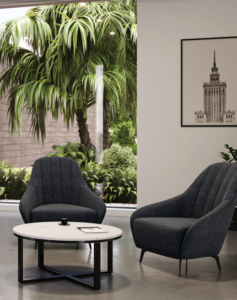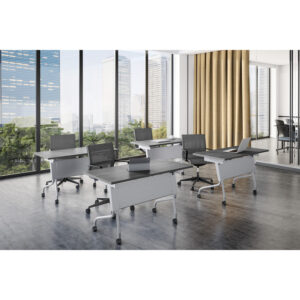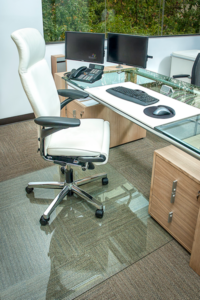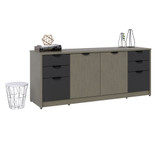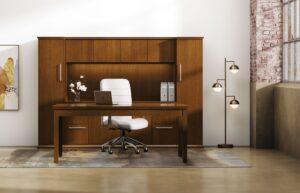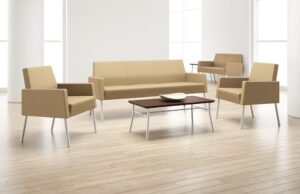Did you know the unhealthiest position for the human spine is the seated position? When you sit at a desk for eight hours or more per day, you put constant pressure on your spinal discs, joints, and soft tissue. If you find yourself hunching over, you can even compress your lungs and other organs.
We all know long hours at a desk can cause pain and stiffness in the back, neck, shoulders and wrists. But if the spine is misaligned, communication with the brain can be affected. This can result in everything from poor concentration and lack of sleep to digestive and respiratory issues.
Understanding ergonomics and good desk posture can help you avoid these problems. We offer ergonomic furniture at NJ Office Furniture Depot, but we don’t claim to be experts in the human anatomy. Fortunately, Dr. Allison Scharf, DC of In Good Hands Chiropractic Center in Princeton has been gracious enough to share some insights that can help you reduce or even eliminate pain that sitting at a desk all day can cause.
Finding the Ideal Ergonomic Position
The ideal seated position maintains the natural position and angles of your neck, spine, shoulders, and arms. Here is a simple checklist to follow for good desk posture.
- Position your monitor directly in front of you at eye level so you don’t have to hunch over or turn your head. Use a phone headset or Bluetooth so you don’t have to hold your phone between your head and shoulder.
- Push your back and hips as far back as possible on a chair with a slightly curved back to support your spine and maintain its natural curve.
- Elbows and arms should rest on padded armrests to prevent your shoulders from being pulled down. Arms should be bent at an angle of about 100-110 degrees when using your keyboard.
- An ergonomic keyboard will allow you to maintain a natural, comfortable position without angling your wrists up, down, or out. Use keyboard wrist pads to support the palms.
- Use an adjustable footrest or wedge to position your feet in a way that creates a 45-degree angle with the floor, which will tilt your pelvis and reduce stress on your back.
Using Ball Chairs to Strengthen Your Core
A ball chair replaces a traditional office chair seat with an exercise ball. Instead of putting pressure on your spine and stressing muscles, a ball chair constantly engages the muscles in your core while almost forcing you to sit with good posture.
A ball chair cushions the pelvis, stimulates blood flow, and keeps you in a balanced position so you can’t lean to one side. With a ball chair, you’ll want to keep your feet flat on the floor to maintain balance. Instead of wearing down the muscles and soft tissue in the core, you actually build strength while you sit!
How Sit/Stand Desks Keep You Moving
It’s a good idea to avoid sitting in the same position for more than 20-30 minutes. It’s also unrealistic to expect workers to stop what they’re doing two or three times an hour.
Sit/stand desks allow you to stand more frequently without disrupting your workflow. In a matter of seconds, you can raise your desk from a seated position to a standing position so you can relieve pressure on your back, neck, and shoulders.
Of course, the opposite of sitting is not standing. It’s motion. The human body was built to move. Consider keeping your desk in the stand position when making phone calls so you can move or even exercise while you work.
Call 732-641-2791 or visit our showroom to learn more about ball chairs, sit/stand desks, and other ergonomic furniture that can help you reduce pain and stay productive!


